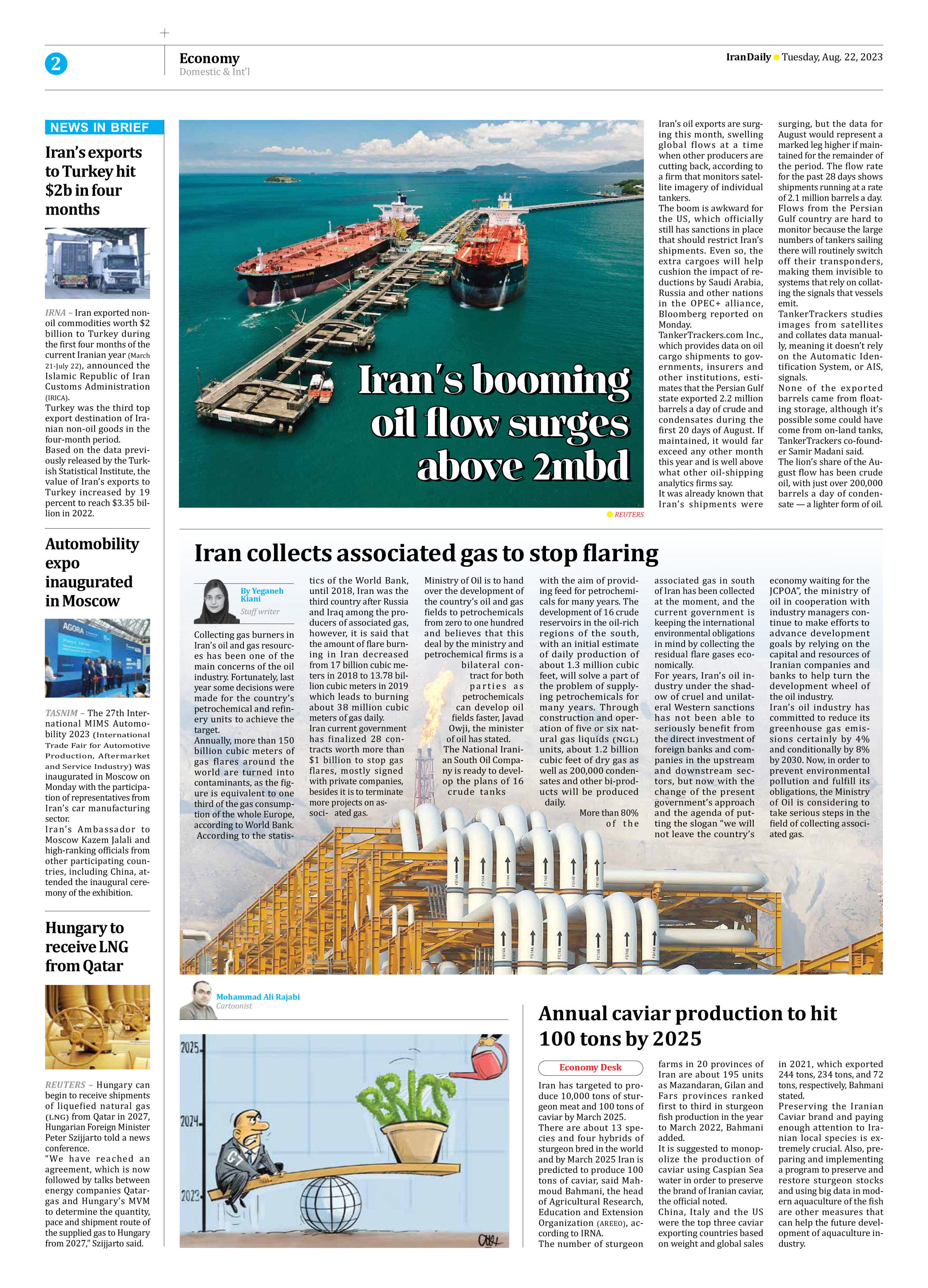
Iran’s booming oil flow surges above 2mbd
Iran’s oil exports are surging this month, swelling global flows at a time when other producers are cutting back, according to a firm that monitors satellite imagery of individual tankers.
The boom is awkward for the US, which officially still has sanctions in place that should restrict Iran’s shipments. Even so, the extra cargoes will help cushion the impact of reductions by Saudi Arabia, Russia and other nations in the OPEC+ alliance, Bloomberg reported on Monday.
TankerTrackers.com Inc., which provides data on oil cargo shipments to governments, insurers and other institutions, estimates that the Persian Gulf state exported 2.2 million barrels a day of crude and condensates during the first 20 days of August. If maintained, it would far exceed any other month this year and is well above what other oil-shipping analytics firms say.
It was already known that Iran’s shipments were surging, but the data for August would represent a marked leg higher if maintained for the remainder of the period. The flow rate for the past 28 days shows shipments running at a rate of 2.1 million barrels a day.
Flows from the Persian Gulf country are hard to monitor because the large numbers of tankers sailing there will routinely switch off their transponders, making them invisible to systems that rely on collating the signals that vessels emit.
TankerTrackers studies images from satellites and collates data manually, meaning it doesn’t rely on the Automatic Identification System, or AIS, signals.
None of the exported barrels came from floating storage, although it’s possible some could have come from on-land tanks, TankerTrackers co-founder Samir Madani said.
The lion’s share of the August flow has been crude oil, with just over 200,000 barrels a day of condensate — a lighter form of oil.







